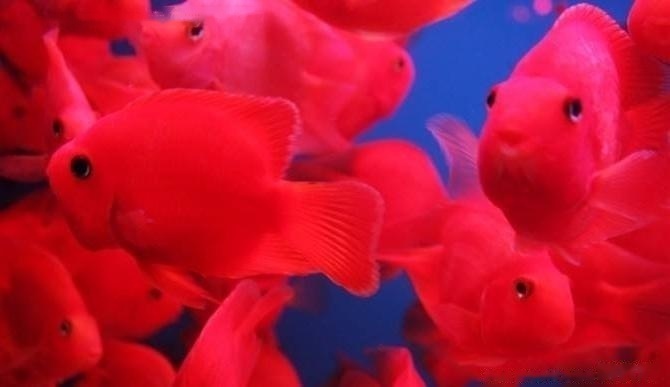
Blood parrots are widely loved by the public because of their bright and beautiful body color, beautiful patterns, and strong environmental adaptability. Many people keep fish< One of the first choices for. Today, I have a pet editor to discuss with you the basic species introduction and feeding methods of blood parrots, let’s take a look!
One, the little story of the God of Fortune fish
1. Introduction of blood parrots
Blood parrots are not a product of nature, but are accidentally created by humans. With its fresh body color, lovely body shape, and strong adaptability to water quality, blood parrots have become popular ornamental fishes.
2. The ancestor of fish hybrids
The emergence of blood parrots created the trend of hybrid ornamental fish and became the ancestor of hybrid ornamental fish. After the popularity of blood parrots, Luohan fish followed closely. become one of the popular fish species. With the continuous improvement of blood parrots, many different varieties have also appeared.
2. Varieties of blood parrot fish
1. Common blood parrot
Generally speaking, the joint part of the head and back of the common parrot is concave, forming a beautiful curve and parrot face. The mouth should be short, the lower lip should be retracted, the T-shaped mouth or the triangular mouth, the body should be short and round, the eyes should be clear, the eye circles should be free of black gauze, and there should be no defects such as crooked mouth, turning gills, gills, dorsal fin lodging, body bending deformity, etc. The body color is naturally bright red
2. Macaw blood parrot
The macaw is a variant of the blood parrot. It has a sarcoma on the top of its head, its body color is bright red, and its body length is longer than that of the blood parrot. Longer, the longest can reach more than 30 meters, and the life span is also about 8 years.
3. The difference between macaw blood parrots and ordinary blood parrots
1. Look at the shape of the mouth
Ordinary parrots are generally T-shaped, crescent-shaped, and triangular, which cannot be complete closure. Macaw's normal beak shape.
2. Look at the back of the head
The junction of the head and the back of an ordinary parrot is generally sunken when viewed from just above the eyes. The ingot parrot is a smooth arc, while the macaw is Protruding. Adult macaws generally start clearly.
3. Look at the body type
The standard blood parrot is short and round, while the macaw is slightly longer and flatter.
4. Feeding of parrot fish
1. Water quality management
Feeding blood parrot requires better water quality and more adequate water than other fish. oxygen. In particular, it reduces the dissolved nutrients in the water, avoids bacterial growth and causes gill disease, and maintains the ability of gill cells to efficiently and effectively attract oxygen.
2. Temperature control
Blood parrots are quite sensitive to temperature. Under the circumstance of low water temperature and severe changes in water temperature, they are easily lost due to physiological reactions. Fresh body color. Using a warmer to raise the water temperature within the range of 25-28°C can make the fish appear brighter and more vibrant.
3. Selection of feeds
Many special feeds for blood parrots are available in the market, and the feeds with astaxanthin and β-carotene are added directly. Feeding can keep the body color of the blood parrot at ?W red.
4. The best tips for mixed breeding
It is recommended to select some cichlids from Central and South America for mixed breeding, especially some medium and large cichlids, which are weaker than the body and swim slowly The cichlids are more suitable. In addition to a variety of body color matching, they can also achieve a state of peaceful coexistence under a certain balance.
![[Dog Training 5] The training method of pet dog dining etiquette](/static/img/12192/12192_1.jpg)




